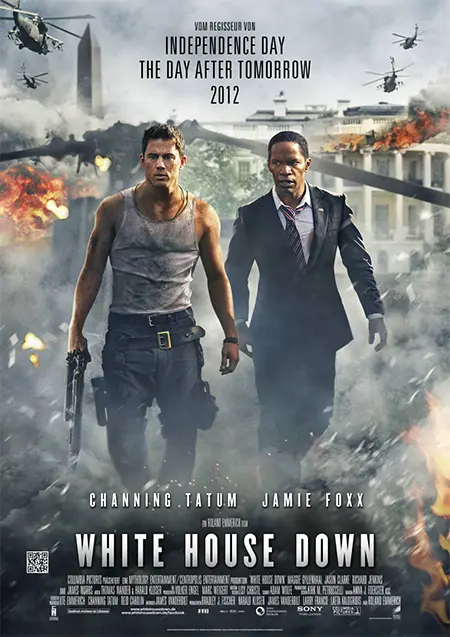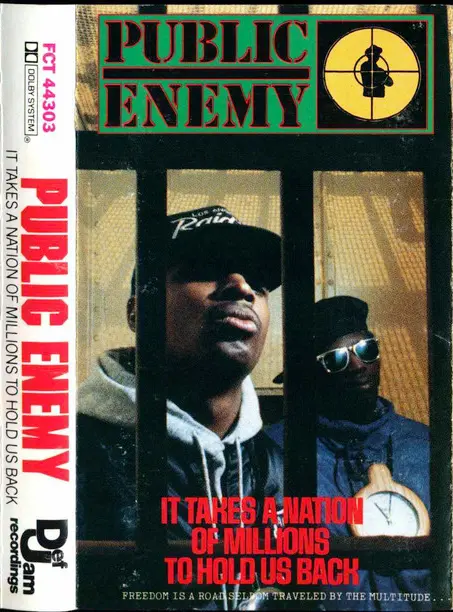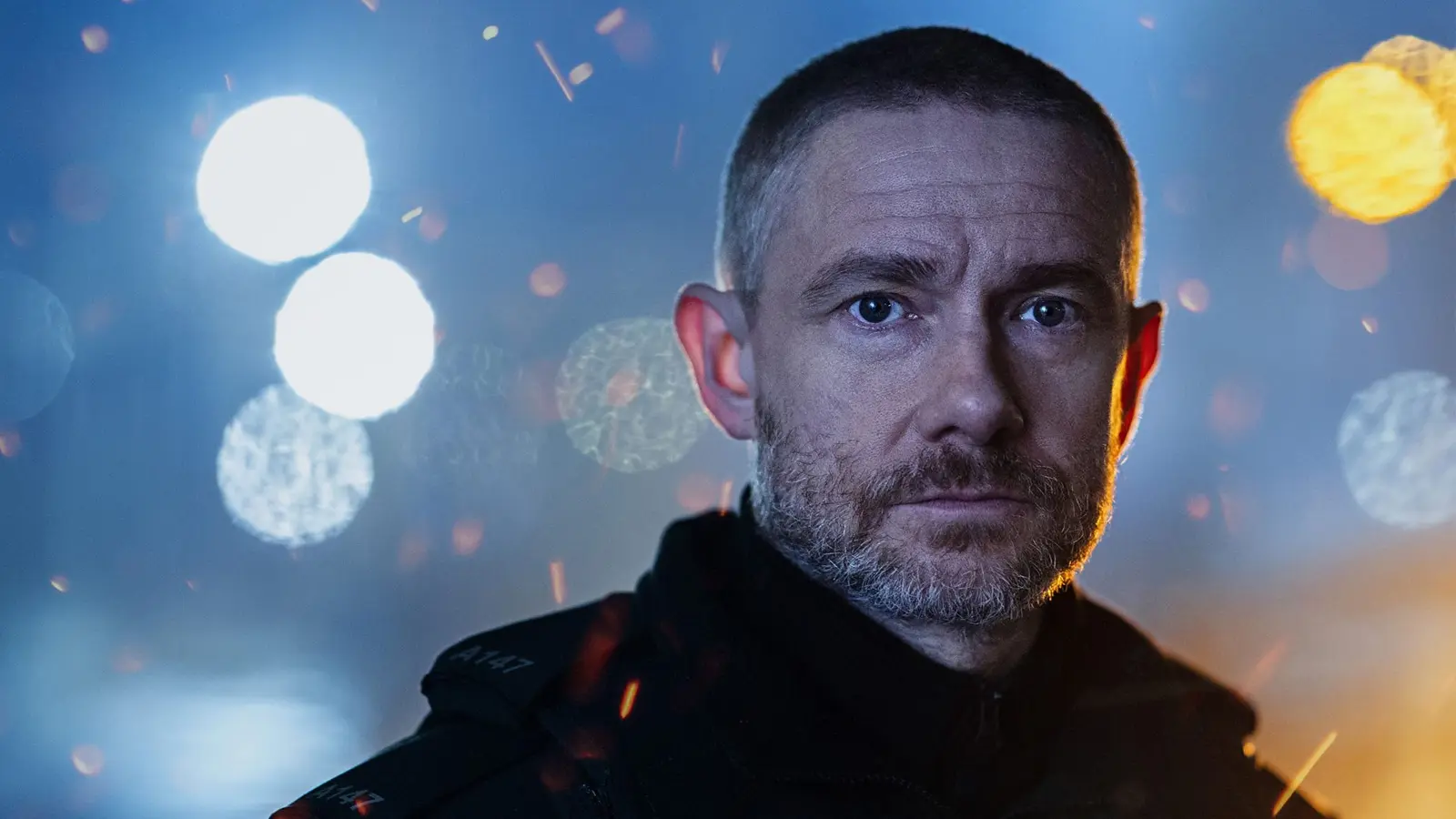Iconography
Explore how media producers use iconography to convey meaning effectively to the audience.
Definition
Iconography simply refers to the pattern of signs we associate with a particular genre.
An obvious example would be the combination of futuristic costumes, props, and settings in science-fiction films. Or the inevitable fight sequences and car chases in action films. Some conventions exist outside the world of the story, but still contribute to our understanding of the genre. For instance, audiences expect to hear scary music in a horror films.
In media studies, we can also use the term iconography to describe the elements and details which characterise other forms of media, such as the different modes of address used in music videos and the various codes advertisers use to position the consumer to want to buy their products and services.
We should critically assess these influential signs because they might reveal important insights into our values and ideologies.
Contents
Iconography and Art
The word iconography was first used to describe the patterns of images found in religious art which communicated culturally important meanings to the audience. Consider the painter’s choice of signs in this representation of Mary holding Jesus:
The depiction of Mary wearing a dark blue robe to symbolise heaven and her spirituality has been used by painters for centuries. Perhaps the earliest representations were blue because the colour was strongly associated with nobility in Byzantine culture. This majesty and purity are reinforced by the inclusion of white lilies. According to Roman mythology, the flowers were created by Juno, the queen of the gods, when she was nursing her baby, Hercules.
The magnificent golden halos around their heads are symbols of light and suggest their divinity. We should also note circles represent eternity in Christianity and many other religions.

Finally, Jesus is opening his arms to bless the audience and to encourage them to accept his teachings. The gesture also seems to foreshadow the crucifixion.
Try searching for images of the Madonna with Child and you will see hundreds of paintings through the ages which contain the same iconography. If we want to understand the preferred reading of these works of art, we need to appreciate their motifs.
Film Studies and Iconography
Steve Neale (1980) argued cinema was a “series of signifying processes” and films could be classified into genres according to their “specific variations of the interplay of codes”. For example, in terms of narrative, the disruptions in action films are usually violent whereas the disruptions in romantic comedies are often a “process of desire”. Murder mysteries rely on enigma codes and musicals are a balance of “narrative and spectacle”.
However, we are probably more familiar with the visual conventions of cinema – the iconography.
Each genre will have its own instantly recognisable iconography. Steve Neale referred to the “sinister lighting effects” which drew attention to the presence of a suspect in a detective film and how “all the resources of the costume and make-up department are mobilised” to “frighten and terrify” the audience watching a horror film.
The Iconography of Action Films
If you look at the official poster for “White House Down”, you will immediately recognise the combination of signs associated with the action genre:
The protagonists are pictured mid-stride and staring down whatever danger is beyond the camera. Their fortitude is clear from their hard facial expressions and fearless body language.
There is an interesting contrast in the dress codes in this particular representation. Tatum’s vest emphasises his rugged masculinity and connotes his status as the common man. Foxx is equally resolute, but he is wearing a suit to suggest he is in a position of authority. His loose tie tells the audience the character is in action mode.

Tatum is holding a large weapon – an essential prop in the action genre.
Finally, there are fiery orange explosions and thick grey smoke in the background. The crisis in heightened by the helicopters flying towards the iconic White House – this is a conflict with national significance.
If you like your heroes battling against incredible odds to defeat the crooked villain and save the world, the iconography on this poster suggests you will enjoy “White House Down”. Audiences will expect to see aerial shots of a car case through the streets of Washington intercut with the close ups of the driver’s determined face as he shifts through the gears. Perhaps the helicopters will also be in pursuit.
Despite watching this sequence in previous action films, including the long shot of the car drifting around a corner before crashing through dining tables outside a restaurant, you will want to repeat the experience because it was great fun. Neale argued “pleasure lies in both the repetition of the signifiers and the fundamental differences”. We enjoy seeing the iconography.
The Western
In his essay on genre in American cinema, Edward Buscombe (1970) referred to the “cluster of images and conventions” we expect to see in Westerns. He thought “the chief glory” of Westerns was the incredible frontier settings, including the deserts, plains, saloons, and ranch houses, which provided the backdrop to the narrative.
He also offered tremendous insight into the other “outer forms”, or iconography, directors used to define their characters. For example, gamblers often wore “bootlace ties”, the “psychopathic hired guns” wore “black gloves”, and the judge usually had a watch chain attached to his coat to signify his relentless pursuit of justice. Of course, “white and black horses have frequently a symbolic function” so the audience can differentiate between the hero and the villain.
Iconography in Westerns
Even modern audiences still expect to see outlaws with their six-shooters, Stetson hats, stagecoaches, and trains with huge cowcatchers at the front of the engine.
Warshow (1954) summarised the appeal of Westerns very effectively: “the spectator derives his pleasure from the appreciation of minor variations within the working out of a pre-established order”.
Computer Games
Many computer games borrow from the iconography of cinema. For example, Tomb Raider: Anniversary uses the patterns of images we associate with adventure stories, especially the Indiana Jones franchise, and role-playing games, such as Metroid Prime 2: Echoes and Horizon Forbidden West, often rely on fantasy or science fiction codes.
The Iconography of Television News
Newscasts continue to provide audiences with the latest developments on the most important local and international stories of the day. The bulletins, updates and “prime time” broadcasts usually begin with a dramatic piece of music to establish the formal mode of address. Positioned behind a desk and wearing professional clothing, the presenters will be stern faced and keeping their backs straight.
We cannot see the autocue, so it appears the presenters are communicating the news directly to the audience. However, there will be a few pages or a tablet on the desk to suggest they have the evidence and research at their fingertips. Sometimes a branded mug will encode a friendlier tone.

When we cut to the political correspondent, they might be standing outside the Houses of Parliament or the White House gates to signify their closeness to the story. The sports reporter will give their opinion from outside the stadium. Or the entertainment segment will come live from the red carpet.
The reporters could just read the press release from the comfort of the studio and we would still get the message, but this combination of signs successfully creates a sense of trust between the producers and the audience, so the iconography is used in newscasts around the world.
Music
Different genres of music seem to inspire their own fashions and looks, such as the punk rock Mohawk or the 1960s mod in their tailored suit.
When you are exploring the iconography of heavy metal, you need to ignore the music and focus on the representation. In terms of dress codes, the long-haired musicians often wear black leather jackets, black trousers, and black boots. The dark aesthetic reinforces the anti-establishment attitude.
By contrast, mainstream dance acts and pop artists tend to be more colourful.
Type any musical genre into an image search and you should see the same pattern of signs being repeated. Consider this cassette sleeve for Public Enemy’s It Takes A Nation Of Millions To Hold Us Back:
The critically acclaimed album is a powerful message of resistance and self-determination, but we are focusing on the iconography of hip hop. The non-verbal codes epitomise a sense of defiance with both Chuck D and Flavor Flav appearing confident and fearless. Beneath the shadows and sunglasses, their direct address demands the audience’s attention – they are in control.
The combination of hoodies, coats and baseball caps is the typical dress code of the genre. If you are wondering about Flavor Flav’s clock necklace, he revealed the origins of the look in an interview with Vlad TV.

Finally, the cell bars signify imprisonment for committing a crime and, more importantly, the desire to break free from society’s constraints.
A similar pattern of signs is used in Common’s Letter to the Free to connote the need for empowerment and change. It is also worth looking at the way Lil Nas X plays with the iconography of Westerns, country music and hip hop in our analysis of his Old Town Road music video because it is such an interesting hybrid of styles.
Conclusion
Iconography is the distinguishing elements, in terms of props and visual details, which characterise a genre. These familiar patterns of signs are a great way to communicate meaning because they can be quickly decoded by the audience. For instance, we know the character wearing a white hat is probably the protagonist while the character wearing a black hat is the baddie who needs to be defeated.
Each new form of communication seems to quickly establish its own iconography. The next time you are on TikTok, explore the “interplay of codes” used in the challenge videos compared to dance videos. Search for memes on Instagram and Twitter and try to define the visual conventions we follow to express our ideas.
Bibliography
The Pleasure of the Text.
Buscombe, Edward. (1970) The Idea of Genre in the American Cinema.
Neale, Steve (1980) Genre.
Neale, Steve (2000) Genre and Hollywood.
Warshow, Robert (1954) Movie Chronicle: The Westerner.
More Genre Theory
Genres shape our expectations and experiences. The following theories and theorists explore how media plays with rules to create meaning and entertain the audience.







